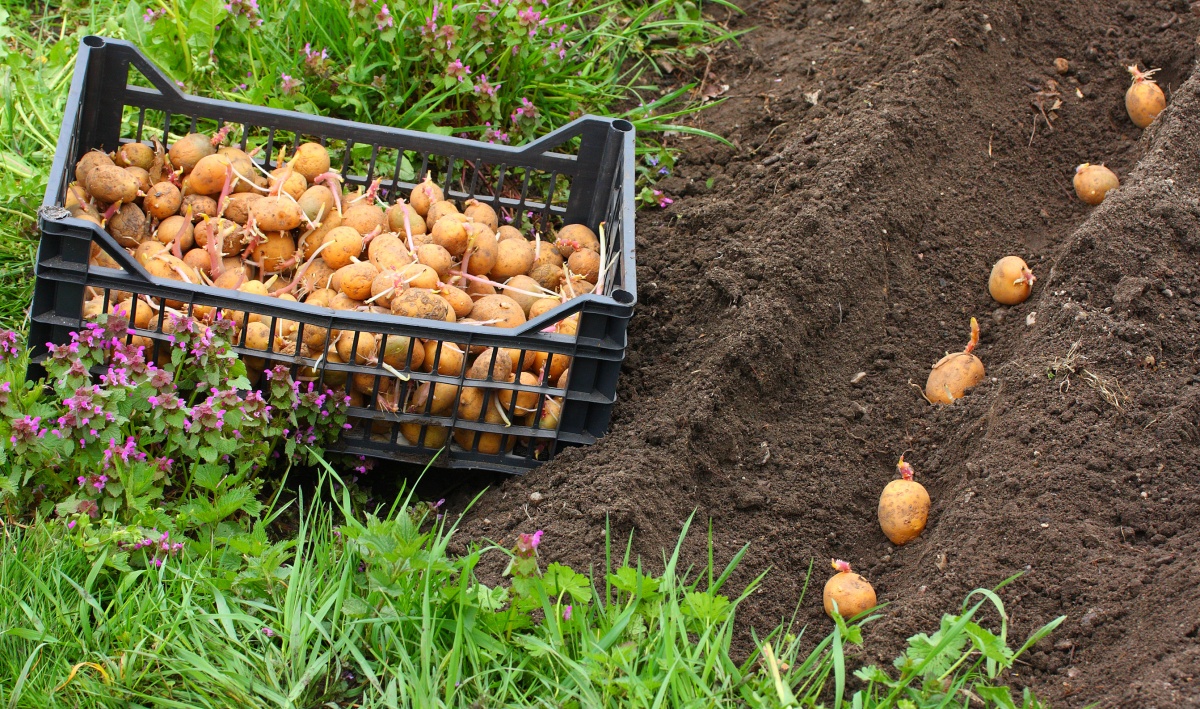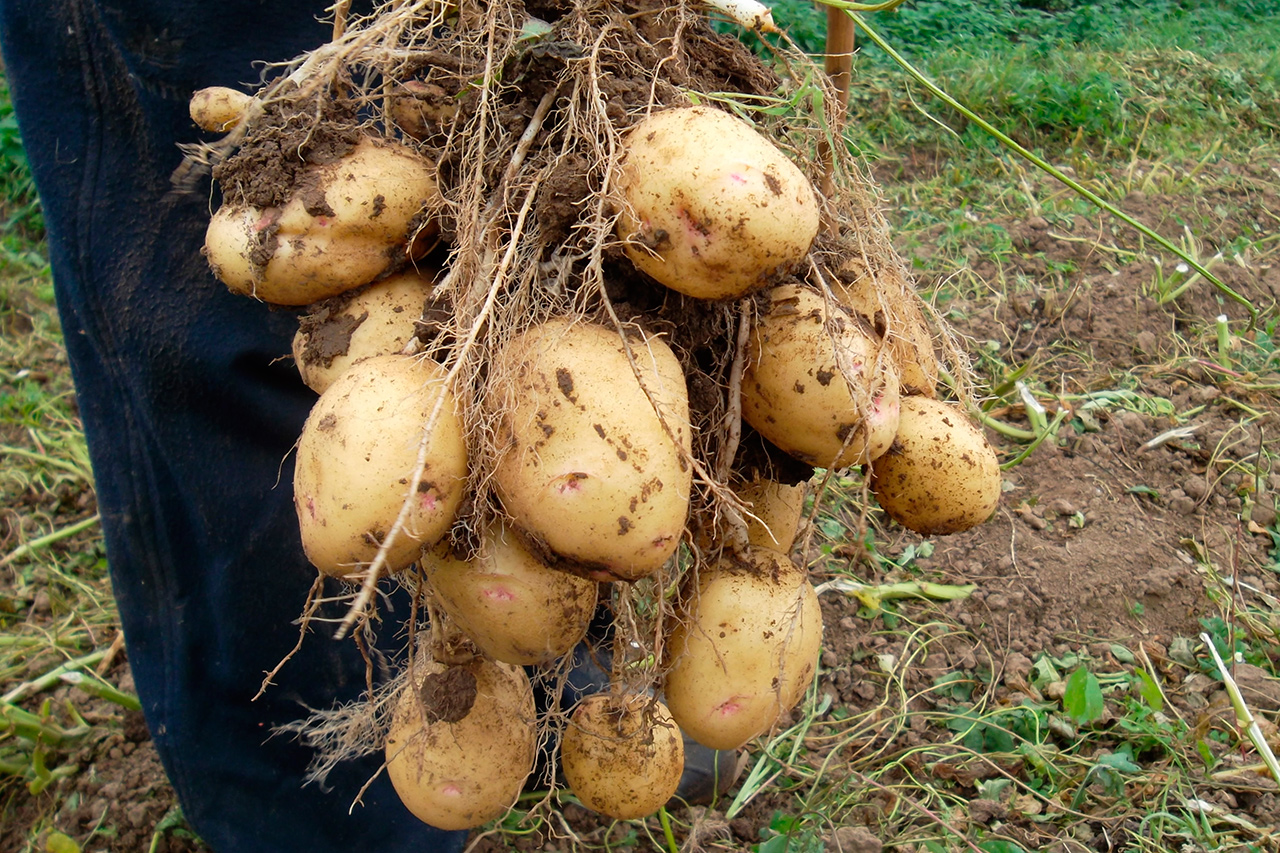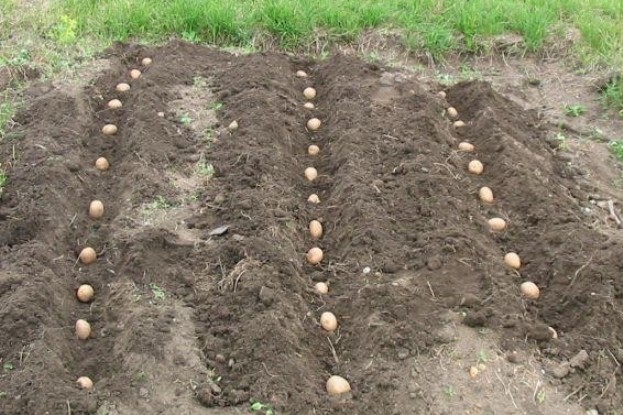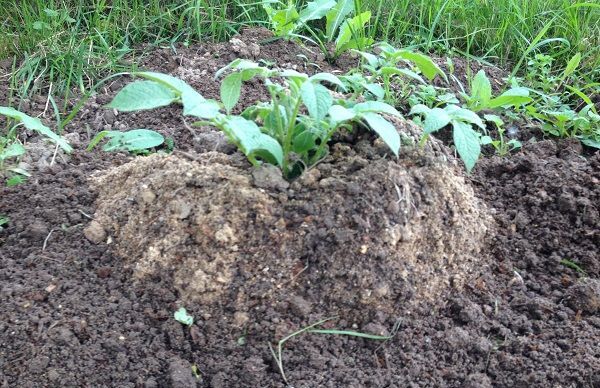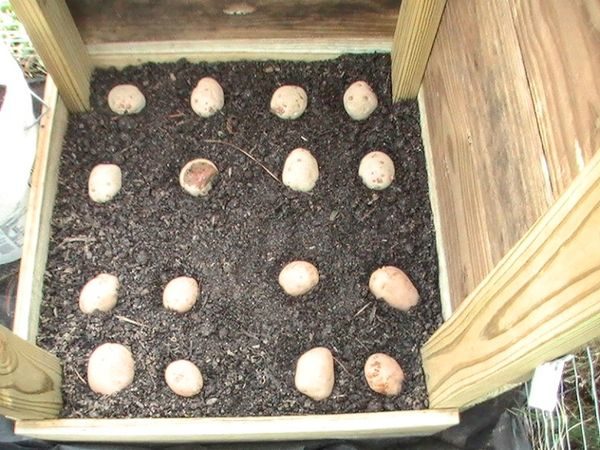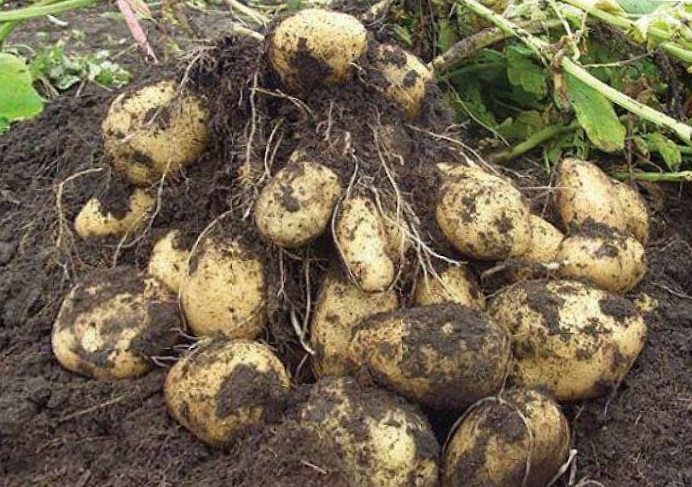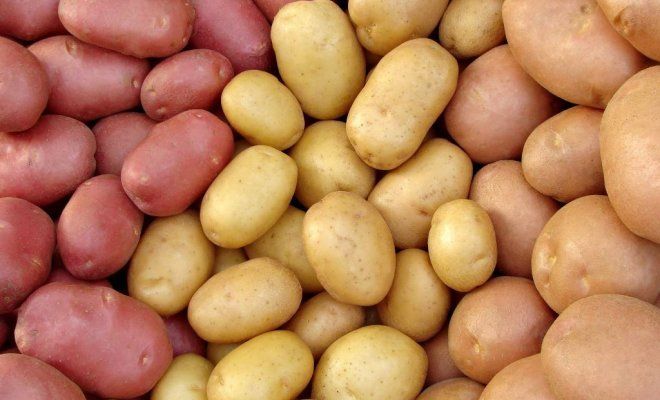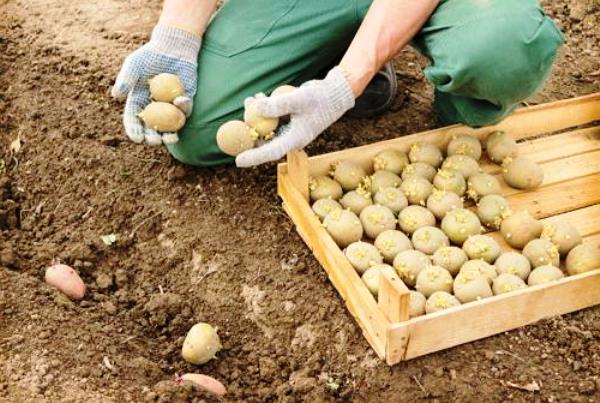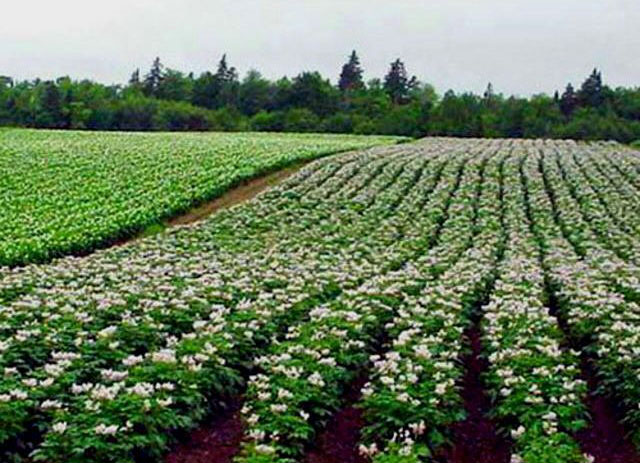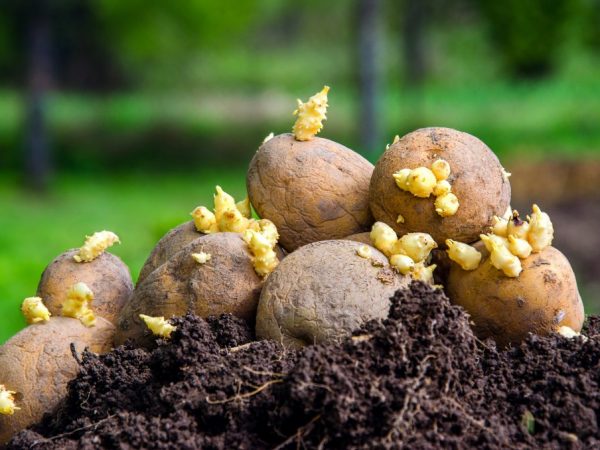Content:
There are such garden crops, without which not a single summer cottage can do. One of these plants is potatoes. Moreover, on the field, it is located in the best place, often occupying a large area. This is not surprising, since potatoes are the basis of many dishes that appear on the table both in summer and in winter, now and in the past. He, not without reason, is considered the most important of the crops in the garden and the second most important after flour products in human nutrition.
General information about potatoes
Growing potatoes, as you know, is done for the tubers that are located below the surface of the earth. At first glance, we can say that the tubers are some kind of plant root, but in reality the tuber is a crop shoot that has changed its appearance. This interesting organ serves for the propagation of potatoes.
The potato tops located on the surface are not resistant to low and high temperatures, but the tubers can withstand rather harsh weather conditions. They accumulate nutrients, so potatoes can grow on soil that is not very fertile.
Inside the tuber, with all the apparent homogeneity of its structure, all the nutrients that are needed for the bushes to germinate are present.
The starch content in fruits reaches 20%. Potatoes serve as a good raw material for the chemical and textile industries. Its tubers, which are not marketable, are used as feed.
Potatoes are tuberous annuals, reproduction takes place in a vegetative way. Belongs to the Solanaceae family. It can also be grown from genetic type seeds.
The plant is a bush with from 2 to 4, sometimes more, stems, each of the bushes can produce from 5 to 15 fruits.
In potato growing, varieties are distinguished by ripening periods. There are 5 groups:
- Early maturation;
- Medium early;
- Mid-season;
- Medium late;
- Later.
By purpose, the farm distinguishes between universal and table varieties. Canteens have the usual regular shape of the tuber, they have few eyes, and they are small. They lie for a long time and have good taste. The varieties are universal for food and industrial purposes. They contain a lot of starch, and the pulp does not acquire a dark color when fresh and cooked.
Any farmer who is involved in farming is always looking for a more convenient and cost-effective way to grow potatoes. Not always a good harvest of potatoes depends entirely on which variety is chosen, the presence of favorable weather conditions and other things. You need to make a certain amount of effort and, so that the work is not in vain, gardeners are trying new methods, potatoes are planted using a new technology, we will consider what they are.
Sowing in the ridges
With this technology of growing potatoes, it is planted in the ridges. This method is well suited for clayey soil on the site and when groundwater is too close to the soil surface.
Caring for planted potatoes consists in watering, hilling, feeding. The method is well suited for the Moscow region.
Benefits:
- Less manual labor is used due to the possibility of using mechanization;
- On the ridge, the soil has the ability to dry out faster than in the conventional method, and the potatoes are almost not subject to rotting due to moisture.
Disadvantages:
- Ridges dry out too quickly on sandy soils. More frequent watering will be required;
- When carrying out the processes of hilling or weeding, potatoes can be damaged;
- Potatoes are more at risk of disease due to dense planting.
Landing in trenches
For sandy lands that tend to dry out quickly, this method is just suitable. In the autumn, trenches are prepared, about 30 cm in depth and up to 1 meter apart from each other. A small layer of wet hay is placed at the bottom, manure or ash is poured onto it. Such trenches can be made in the spring, if there was no time to do it in the fall, but they use rotted compost for laying.
Potato tubers are planted in trenches and covered with earth. If planted in early spring, plastic can be applied. Potatoes are spud twice before flowering.
Advantages:
- Tubers grow faster due to warming up with compost. Plantings tolerate spring frosts better;
- Also, water stays in the compost longer. You need to water less often;
- Potatoes get the substances necessary for nutrition and growth from compost. There is no need for additional fertilizers;
- Big harvest.
Disadvantages:
- With increased soil moisture, tubers can rot;
- Hay costs;
- The labor of digging trenches.
Chinese method
The planting itself differs in that when planting tubers, they are immersed up to half a meter into a hole or trench. A layer of mulch and nutrient composition is added several times as needed. In China, it is believed that this way potatoes develop faster and better, which leads to a large harvest. In the Middle Kingdom, new, high-yielding varieties are being cultivated.
Pros:
- No large scale required;
- Weeding and hilling are not needed;
- Rare watering;
- Protection against the Colorado potato beetle.
Minuses:
- Deep trenches are physically demanding;
- There is no guarantee of a large harvest.
There are methods and technologies for planting potatoes in the garden and vegetable garden, which have practically no drawbacks, and with their help, guaranteed vegetable yields are obtained. Below are the top 3 best ways to plant potatoes.
Meatlider method
This method is able to double the volume of harvested potatoes. Its main difference from the usual methods is a more rare landing. However, much more ripe potatoes are chosen.
To do this, you need to make beds, 40 cm wide, between them - about 1 meter. An important point is the preliminary marking of the site. Only the beds themselves are processed, the space between them is never touched. At the edges of the prepared site, bumpers are made from the ground. Boards reinforce the edges of uneven terrain with a slope for leveling. Potatoes in a slightly sprouted form, in a checkerboard pattern, are planted on beds with a step of 30 cm. Compost, droppings, and ash are placed in the holes.
Advantages:
- There is no need to huddle and little weed is needed;
- Root system protection;
- The harvest is big;
- Small growing area.
In addition to the physical costs of the arrangement, no shortcomings have been identified.
Dutch way
Fertilizers are placed in the hole dug for planting along with the tuber. The difference between the method is in greater attention to loosening the soil, as well as operations for further care, feeding and watering.
In order to huddle the plant, they use land taken from the aisle, and not from the garden itself, so the roots of the culture remain intact. Also, with this method, the tops are mowed, about 2 weeks before harvesting.
Pros:
- Big harvest;
- Easy handling thanks to the sparse fit.
There are also almost no disadvantages. The arrangement is easier than the previous method.
Gülich's technique
A feature of this method is the division of the site into equal squares of 1 m. In each of them, in the very center, loosening is performed and the place is covered with compost.
A tuber is placed in the hole, again in the center of the square, with sprouts down and sprinkled a little. After the emergence of shoots, they are laid on the ground and again sprinkled with soil, and so on up to 4 times. This contributes to the development of a powerful plant root system. If a severe drought ensues, watering will be required.
The only drawback is that it is not a suitable method for those who cannot appear on the site every day. Seedlings require frequent dusting with soil.
Bags, boxes and barrels
This method is somewhat similar to the one described above. But the planting and cultivation of potatoes does not take place in the open field, but in a bag, barrel or box. Ventilation holes are made in the sides of the container. The seedlings are covered with compost and a good root system is formed. The method is quite good for a small space.
Straw
This method is considered new and interesting. In this case, the beds are marked by pulling the twine. Stack about 40 cm high straw. Then they take a stick, pierce the straw and put the tuber, close the hole.
Pests and diseases
The most dangerous and most common potato pest is the Colorado potato beetle. They are collected together with the larvae and burned. Mustard is also used, scattered between the rows.
The potato nematode is a worm with a length of 1 mm; it harms both tubers and tops. For prevention, the selection of planting material is carried out with special attention and the crops in the garden are correctly alternated.
Another common disease is late blight. These are brown spots on the leaves and white bloom on their back. For prevention, they strengthen the immunity of the plant with the help of fertilizers.
Whatever methods the gardener chooses for himself, observing the simple rules of care, he will always receive a worthy reward for his work and mind in the form of a harvest of nutritious potato tubers every year. New ways are becoming more perfect, and in the country there is something to strive for.
